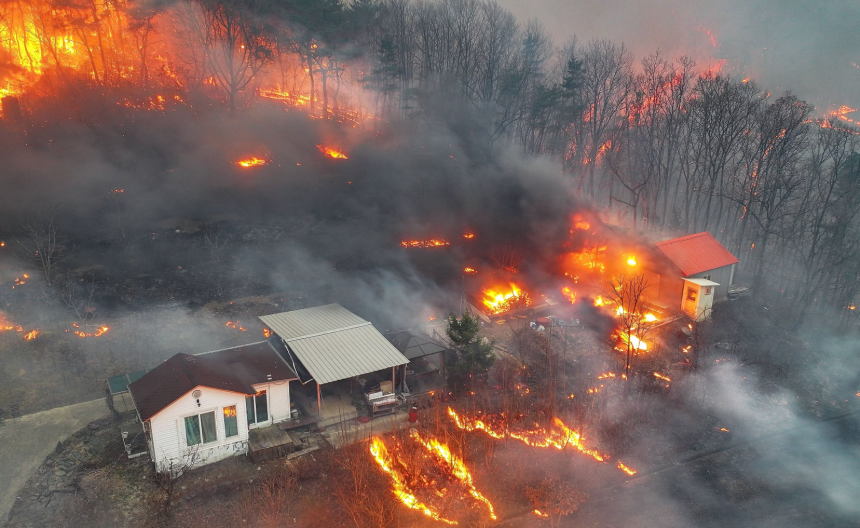Unprecedented wildfires have engulfed southern regions of South Korea, leading to significant loss of life, mass evacuations, and the destruction of invaluable cultural heritage sites. The blazes, among the worst in the nation’s history, have prompted urgent efforts to safeguard both residents and centuries-old artefacts.
Devastating Impact on Communities and Cultural Heritage
The wildfires have resulted in at least 28 fatalities and forced over 37,000 individuals to evacuate their homes. More than 300 structures have been destroyed, including the historic Gounsa Temple in Uiseong County. Established in 681 AD during the Shilla dynasty, Gounsa was renowned for its architectural beauty and housed numerous national treasures. Tragically, approximately 20 of its 30 buildings have been reduced to ashes.
The destruction extends beyond Gounsa. At least 18 designated heritage sites have suffered substantial damage, including the Chiljoknyeong Pass on Baegunsan in Gangwon Province and the Goryeo-era Dubangjae Shrine in Hadong, South Gyeongsang.
Efforts to Protect and Preserve Cultural Assets
In response to the imminent threat, authorities have mobilized over 750 workers dedicated to the protection of cultural heritage. Measures include deploying fire retardants, covering structures with protective cloths, and relocating movable relics to safer locations. Notably, a valuable 8th-century stone Buddha statue from Gounsa Temple was successfully safeguarded before the temple succumbed to the flames.
The Hahoe Folk Village, a UNESCO World Heritage Site, also faced evacuation orders. Firefighting teams were strategically positioned to defend the village, and as of now, it has been spared from the fires.
Government Response and Ongoing Challenges
Acting President Han Duck-soo has described the wildfires as causing “unprecedented damage” and has instructed all relevant agencies to utilize maximum resources for containment and relief efforts. Despite the deployment of nearly 9,000 firefighters and over 130 helicopters, strong winds and dry conditions have hindered suppression efforts. The government has elevated the wildfire warning to its highest level and designated the hardest-hit areas as disaster zones to expedite recovery operations.
Community Resilience and International Support
The local communities, deeply connected to their cultural landmarks, have expressed profound grief over the losses. The destruction of Gounsa Temple, in particular, has been met with mourning, as it represented a significant spiritual and historical symbol. International organizations and neighboring countries have extended condolences and offered assistance in combating the fires and aiding in the preservation of South Korea’s rich heritage.
Conclusion
As South Korea confronts this calamity, the immediate focus remains on extinguishing the fires, ensuring the safety of its citizens, and protecting remaining cultural treasures. The resilience of the affected communities, combined with national and international support, will be crucial in the recovery and restoration of both lives and heritage in the aftermath of these devastating wildfires.











